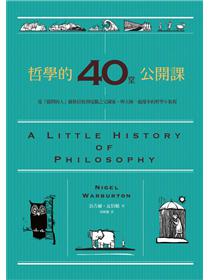章節試閱
1 Physical Sciences — Paleontology物理科學常考主題1:古生物學
在本章,你將學到⋯⋯
★綜合寫作題的快速解題方法
★綜合寫作題如何設定最理想的篇章結構
解讀常考題
新托福綜合寫作題涉及物理科學的題目覆蓋了十分廣泛的話題,包括氣候、海洋、地
震、沙漠、天文學、光與聲、環境、觸覺以及化學、地質學、自然地理學方面的原理。話
題和原理涉及的概念不會太高深,因此考生都能夠理解。
▼模擬試題1
閱讀以下的短文並聆聽講座,完成以下這道作文題。
Narrator: This section measures writing to communicate in an academic environment.There are two writing tasks.For Writing Task 1, the integrated writing task, you will read a short passage and listen to a lecture and then answer a question. For Writing Task 2, the independent writing task,you will answer a question based on your own knowledge and experience.Now listen to the directions for Writing Task 1.For Writing Task 1, you will have three minutes to read a short academic passage. You may take notes. The passage will be removed and you will listen to a lecture about the same topic. Again, you may take notes.You will have 20 minutes to write a response about the relationship between the lecture and the reading. Try to answer the question as completely as possible using information from the reading passage and the lecture. Do not give your personal opinion. You will be able to see the reading passage again. You may use your notes.
An effective response will be 150 to 225 words. You will be rated on the quality of your
writing and on the completeness and accuracy of the content. If you finish your response
before time is up, you may go on to Writing Task 2.
Begin reading now.
綜合寫作題的快速解題方法和篇章結構
1. 快速解題的三個簡單步驟
閱讀短文的過程中,明確作者的立場,找到三個分論點。
聽講座的過程中,抓住反駁閱讀短文的論點(少數情況下論點和閱讀短文一致)並做筆記。
寫作文時,概括做講座教授的立場,列出三個分論點。在時間允許的情況下,寫得越詳細越好。
2. 綜合寫作題最理想的篇章結構
第一段總結做講座教授的觀點,要充分結合具體的內容,讓並非專家的讀者能夠理解。考生要儘量用自己的話改述。接下來分三段具體闡述講座中的三個分論點。也就是說,綜合寫作題的作文要分為四個段落。記住,在寫綜合寫作題的作文時,不能融入自己的觀點。如果加入自己的觀點,分數會很低。只有寫獨立寫作題作文時才能夠涉及自己的個人觀點。
綜合寫作題的高分策略
1. 仔細閱讀短文,弄清作者的論點或觀點以及三個分論點。例如,上面那篇關於恐龍的閱讀短文,論點是「科學家們認為腕龍有可能生活在水中」。
2. 可以簡要記錄閱讀短文中的關鍵字。不過,寫作文的時候電腦螢幕上會出現閱讀短文,所以不做筆記也沒有關係。
3. 仔細聽講座,認真、有技巧地做筆記。利用閱讀短文中的資訊來理解教授所講的內容和論點。
4. 通常來講,教授的論點與閱讀短文的論點是對立的。不過也有極少數情況,教授會補充一些資訊來支援閱讀短文的論點。
5. 考生無須詳細記錄閱讀短文中的論點,但是一定要詳細記錄講座中的論點。不過更重要的是,考生必須要真正理解教授的推理思路與閱讀短文的推理思路有何不同。
6. 講座的篇章結構一般與閱讀短文的篇章結構相似:開篇提出論點,接下來的三段詳細闡述。聽講座時要謹記這種篇章結構以便抓住關鍵資訊。
7. 不要照搬閱讀短文裡的詞句,要用自己的話改述論點。
8. 作文的篇章結構儘量與講座的篇章結構一致:開篇總結話題,給出陳述教授立場和論點的主題句,接下來的三段分別闡述三個分論點。
9. 不要浪費時間將閱讀短文裡的論點一一羅列出來,評分者可不會被你的小伎倆矇騙。這麼做只會浪費時間,並影響最終的分數。
10. 寫作文時儘量用自己的話進行改述,不要一字不改地照搬題目。可以照搬學術概念和專業術語中的片語,其他就用自己的話來陳述。
11. 不要試圖超越自己真實的英語水準,將作文寫得很高深。清楚、準確的表述要勝過華而不實、沒有條理的文章。一旦出現嚴重的錯誤就會被扣分,表達含糊也會被扣分,因此
還是使用自己習慣的語言來表述清楚就可以了。
12. 即便是總結教授的論點,用詞也要恰當、明確,避免模糊的表達,如:The professor talks about changes in recent years. 完整、明確的表達是:The professor talks about
the recent trend of people reacting negatively to commercial advertisements. 儘量做到語言達意,富有條理。如果用了華麗的詞彙,但是意思卻含糊不清或用詞不準確,評分者也會扣分。
13. 控制好考試時間。
高分範文
In the lecture, the professor talked about Brachiosaurus’ habitat. Disputing the passage’s arguments that this particular dinosaur lived in water, she cited several pieces of evidence showing that it lived near water.
First, she said there was fossil evidence of Brachiosaurus’ footprints on land. The evidence shows that some sauropods walked on four feet in groups and youngsters may have to run on their hind legs to keep up with the adults. This evidence contradicts the claim in the passage that Brachiosaurus’ legs could not support their massive weight and had to rely on water buoyancy.
Second, the professor said Brachiosaurus could easily feed on land plants and thus did not depend on water plants as the passage argued. Anatomically similar to a giraffe,it had relatively long front legs, which allowed it to extend its neck upward with less effort. Moreover, even if it could only reach out its neck horizontally, there were plenty of plants at its body height. What’s more, its long neck allowed it to cover a large surface area so it could easily devour a large quantity of food without having to move much.
Third, the professor dismissed the argument in the passage that Brachiosaurus lay submerged in water and used its nostrils to breathe. She cited the evidence of bone fossils indicating that these dinosaurs had narrow feet which were unfit for life in water.For a large animal to live in the lakes or swamps, the professor believed it needed to have broad feet like those of a hippopotamus to walk on the muddy bottom.
萬用模板
許多主題為物理科學的綜合寫作題會涉及討論遠古時期一些現象的學科,如地質學、自然地理學和古生物學。針對這些話題,閱讀短文通常會提出一種觀點解釋某一現象,然後講座提出另一種觀點。兩種觀點都提出各自的「證據」。下面的萬用寫作範本就是針對這類寫作題設計的。
針對證據類題目的萬用寫作範本:
In the lecture, the professor talked about _______________. Disputing the passage’s arguments that ____________ , she cited several pieces of evidence showing that _____________.
First, she said there was evidence of ________________. The evidence shows that ____________. This evidence contradicts the claim in the passage that ___________.
Second, the professor said ________________ and thus did not ______________as the passage argued. Moreover,________________. What's more, _____________ .
Third, the professor dismissed the argument in the passage that ______________. She cited the evidence of _____________ indicating that _____________.
事實上,不僅是物理科學,其他學術內容的作文也可以套用這個範本。例如,社會科學領域討論古文明、考古學及古人類學相關證據的題目,就可以用這個範本進行寫作。建立自己的寫作句型庫考試前要多閱讀、多聽和多說,在閱讀英文文章、聽英文材料和說英文的過程中訓練英語思維能力。這需要花很多時間,但是效果肯定是最好的。另一種訓練英語思維的方法是:熟記本書中的實用句型和片語。這是短時間內提升英語思維能力的最佳方法。綜合寫作題中遇到涉及物理科學的題目時,下面的句型都可以用上。現在,讓我們開始熟記這些實用句型吧!
• 閱讀好句型,成為我的作文佳句!
1. Because x was…, scientists believe it was probably…因為⋯⋯,科學家們相信可能⋯⋯
Because the animal limited by its huge size and shape, scientists believe it was probably confined to a water habitat.
延伸說法 Because the large dinosaur would have been unable to move on land,scientists believe it was probably an aquatic species.
2. For one thing, on land x would have been unable to VERB…首先,陸地生活無法完成⋯⋯
For one thing, on land the short legs of Brachiosaurus would have been unable to support such a large mass.
延伸說法 For one thing, on land Brachiosaurus would have been unable to go from lying down to a standing position.
3. Second, it is unlikely that x could have VERBed… due to x其次,因為⋯⋯的原因,它不可能⋯⋯
Second, it is unlikely that Brachiosaurus could have lifted its neck to reach tree leaves on land due to the weight of its head and long neck.
延伸說法 Second, it is unlikely that Brachiosaurus could have got enough to eat from land trees due to its heavy neck.
4. Finally, because…, x could have VERBed最後,因為⋯⋯,它可以⋯⋯
Finally, because its nostrils are located at the top of its head, the Brachiosaurus could have spent much of the time mostly submerged in deep lake waters.
延伸說法 Finally, because Brachiosaurus was often under water, it could have breathed through its nostrils.
• 講座好句型,成為我的作文佳句!
1. But these x were without a doubt able to VERB但是,毫無疑問,⋯⋯能夠⋯⋯
But these dinosaurs were without a doubt able to walk on dry land.
延伸說法 But these animals were without a doubt able to live on land.
2. When we look at all the evidence, we can see that…當審視所有證據,我們會發現⋯⋯
When we look at all the evidence, we can see that they were not aquatic dwellers.
延伸說法 When we look at all the evidence, we can see that Brachiosaurus lived near water, not in water.
3. First, let’s take the argument that x would be unable to VERB because…首先,我們分析一下該論點⋯⋯
First, let’s take the argument that Brachiosaurus would be unable to stand on land because its legs would not have supported its weight.
延伸說法 First, let’s take the argument that Brachiosaurus would be unable to walk around on land because its legs were too weak.
4. Second, because of x, a Brachiosaurus could have VERBed其次,由於⋯⋯,腕龍可以⋯⋯
Second, because of its small, light head and long forefeet, a Brachiosaurus could have lifted its neck.
延伸說法 Second, because of its proportionately small head, a Brachiosaurus could have lifted it up to reach trees.
• 高分範文中,有這些作文佳句!
1. In the lecture, the professor talked about x教授在講座中談論了⋯⋯
In the lecture, the professor talked about Brachiosaurus’ habitat.
延伸說法 In the lecture, the professor talked about where Brachiosaurus probably lived.
2. Disputing the passage’s arguments that…, she cited several pieces of evidence showing that…為反駁文章中的⋯⋯觀點,她舉出若干證據,證明⋯⋯
Disputing the passage’s arguments that this particular dinosaur lived in water, she cited several pieces of evidence showing that it lived near water.
延伸說法 Disputing the passage’s arguments that Brachiosaurus was aquatic,she cited several pieces of evidence showing that it was terrestrial.
3. IFirst, she said there was x evidence of y首先,她說有⋯⋯的證據
First, she said there was fossil evidence of Brachiosaurus’ footprints on land.
延伸說法 First, she said there was clear evidence of Brachiosaurus’ tracks on land.
4. Second, the professor said x could easily VERB and thus did not VERB as the passage argued.
其次,教授說⋯⋯會輕易⋯⋯因而不會如文中所說那樣⋯⋯
Second, the professor said Brachiosaurus could easily feed on land plants and thus did not depend on water plants as the passage argued.
延伸說法 Second, the professor said Brachiosaurus could easily reach land plantsand thus did not need to eat aquatic plants as the passage argued.
5. Third, the professor dismissed the argument in the passage that…第三,教授不接受閱讀短文中⋯⋯的論點
Third, the professor dismissed the argument in the passage that Brachiosaurus lay submerged in water and used its nostrils to breathe.
延伸說法 Third, the professor dismissed the argument in the passage that Brachiosaurus spent a lot of time under water.
關鍵詞語
• dinosaurs 恐龍
• aquatic 水生的
• sauropod 蜥腳龍
• the Jurassic Period 侏羅紀
• Brachiosaurus 腕龍
• nostrils 鼻孔
• equivalent of 與⋯⋯相當
• be submerged in 潛入⋯⋯以下
• extend (number + measure word)伸展到(數字+ 量詞)
• snorkels ( 潛水者使用的)通氣管
• counterbalance 平衡(力)
• aquatic dwellers 水棲動植物
• be limited by 受限於⋯⋯
• Let’s take the argument that⋯讓我們分析一下該論點⋯⋯
• be confined to限定在(一定範圍以內)
• fossil tracks 化石足跡
• habitat (動植物的)棲息地
• herd 獸群
• frame 身體;體型
• stance 站姿
• collapse 塌陷
• parallel to與⋯⋯相同;與⋯⋯同時
• crushed by 被⋯⋯壓碎
• horizontal reach 水準可達距離
• buoyancy 浮力
• sweep x from side to side將⋯⋯從一端移到另一端
• swamps 沼澤
• swallow whole 整個吞下
• survive by VERBing通過⋯⋯而活下來
• wade about 在水中四處蹚
▼再練習一次!
學習了以上這些策略、實用句型、關鍵詞語、高分範文和萬用寫作範本之後,再回頭看看例題。再讀一遍閱讀短文,然後再聽一遍講座。如果還是聽不懂講座內容,就反覆多聽幾遍,或者參考錄音原稿。然後修改你之前寫的作文,或者重新寫一篇作文。修改或重寫作文時,試著運用本章學到的寫作技巧。完成之後,比較一下修改或重寫前後的兩篇作文,看看是不是很不一樣呢?
Narrator: Now listen to part of a lecture on the same topic.(woman) Professor: Of course, dinosaurs like the Brachiosaurus would have spent considerable time ear water—feeding and drinking near the many swamps and lakes that existed in the Jurassic Period. ut these dinosaurs were without a doubt able to walk on dry land. When we look at all the evidence, e can see that they were not aquatic dwellers.
First, let’s take the argument that Brachiosaurus would be unable to stand on land because its legs ould not have supported its weight. We know Brachiosaurus walked on land on all four legs because any fossil tracks have been found, indicating groups of Brachiosaurus walking together. In fact, scientists have even found track evidence that some sauropod babies could run on two feet alongside the herd.
Second, because of its small, light head and long forefeet, a Brachiosaurus could have lifted its neck. With long front legs and shorter hind legs, its stance was similar to that of a giraffe, and that posture gave it some advantages. At the very minimum, it could raise its neck up parallel to its body, so that it reached the branches of conifers and other trees at that height. Moreover, because the Brachiosaurus had great horizontal reach on land,it could sweep its head from side to side, swallowing whole great quantities of ferns and other terrestrial plants.
Finally, the Brachiosaurus could not have lived in water. From bone fossils we know that its feet and limbs were too narrow to allow it to stand very long in mud. Animals that spend considerable time in muddy waters have short legs and broad, flat feet, which allow them to wade about in swamps without sinking down too far. Water-dwelling hippopotamus and elephants, for example, have these broad, flat feet—very different from Brachiosaurus.
1 Physical Sciences — Paleontology物理科學常考主題1:古生物學
在本章,你將學到⋯⋯
★綜合寫作題的快速解題方法
★綜合寫作題如何設定最理想的篇章結構
解讀常考題
新托福綜合寫作題涉及物理科學的題目覆蓋了十分廣泛的話題,包括氣候、海洋、地
震、沙漠、天文學、光與聲、環境、觸覺以及化學、地質學、自然地理學方面的原理。話
題和原理涉及的概念不會太高深,因此考生都能夠理解。
▼模擬試題1
閱讀以下的短文並聆聽講座,完成以下這道作文題。
Narrator: This section measures writing to communicate in an acad...
目錄
• 托福總監話說前頭
• 作者序
第1部分An Overview of the TOEFL iBT新托福考試怎麼命題
• What the TOEFL iBT Measures新托福考試考什麼
• A Comprehensive Look at the Writing Section新托福考試怎麼命題:寫作命題全解
第2部分Integrated Writing and Independent Writing綜合寫作和獨立寫作
Task 1 Integrated Writing 第一題 綜合寫作題全解
• 1 Physical Sciences — Paleontology物理科學常考主題1:古生物學
• 2 Humanities and the Arts — Music History人文藝術常考主題1:音樂史
• 3 Life Sciences — Zoology生命科學常考主題1:動物學
• 4 Social Sciences — Archaeology社會科學常考主題1:考古學
• 5 Physical Sciences — Energy物理科學常考主題2:能源
• 6 Humanities and the Arts — Literature人文藝術常考主題2:文學
• 7 Life Sciences — Ecology生命科學常考主題2:生態環境
• 8 Social Sciences — Advertising社會科學常考主題2:廣告
Task 2 Independent Writing 第二題 獨立寫作全解
• 9 Choose one from two: Do you agree or disagree
Do you support or oppose如何應對二選一題型1
• 10 Choose one from two: Some people prefer x, others prefer y
Either x or y, which do you choose如何應對二選一題型2
• 11 Explicit compare and contrast
Advantages and disadvantages 如何應對「比較與對比」和「利弊」題型
• 12 “What”: What changes
What skills如何應對What 題型
• 13 “Why”: Why do you think
Why is x important如何應對Why 題型
• 14 “How”: How does x influence y
How is x different from y如何應對How 題型
• 15 “Hypothetical if”: If you could change one thing
If you could x如何應對假設性題型
• 16 Open-ended describe and discuss: Discuss the causes
Describe a custom如何應對開放型題型005
附錄
• The Scoring of the TOEFL iBT新托福考試評分
• 托福總監話說前頭
• 作者序
第1部分An Overview of the TOEFL iBT新托福考試怎麼命題
• What the TOEFL iBT Measures新托福考試考什麼
• A Comprehensive Look at the Writing Section新托福考試怎麼命題:寫作命題全解
第2部分Integrated Writing and Independent Writing綜合寫作和獨立寫作
Task 1 Integrated Writing 第一題 綜合寫作題全解
• 1 Physical Sciences — Paleontology物理科學常考主題1:古生物學
• 2 Humanities and the Arts — Music History人文藝術常考主題1:音樂史
• 3 Life Sciences — Zool...
 26收藏
26收藏

 17二手徵求有驚喜
17二手徵求有驚喜



 26收藏
26收藏

 17二手徵求有驚喜
17二手徵求有驚喜













































